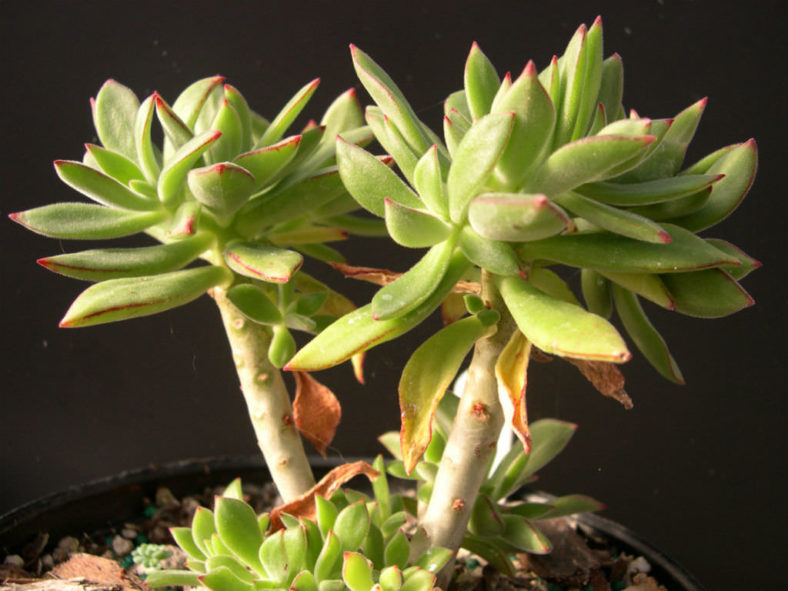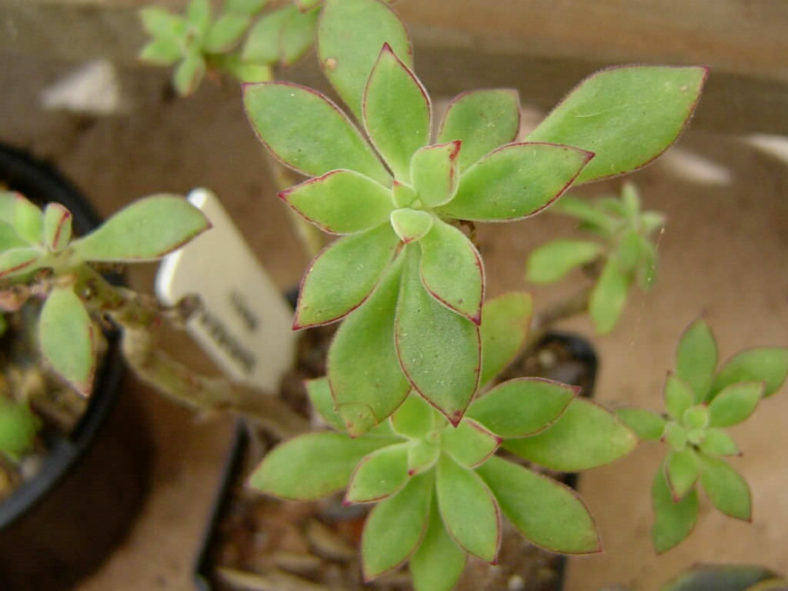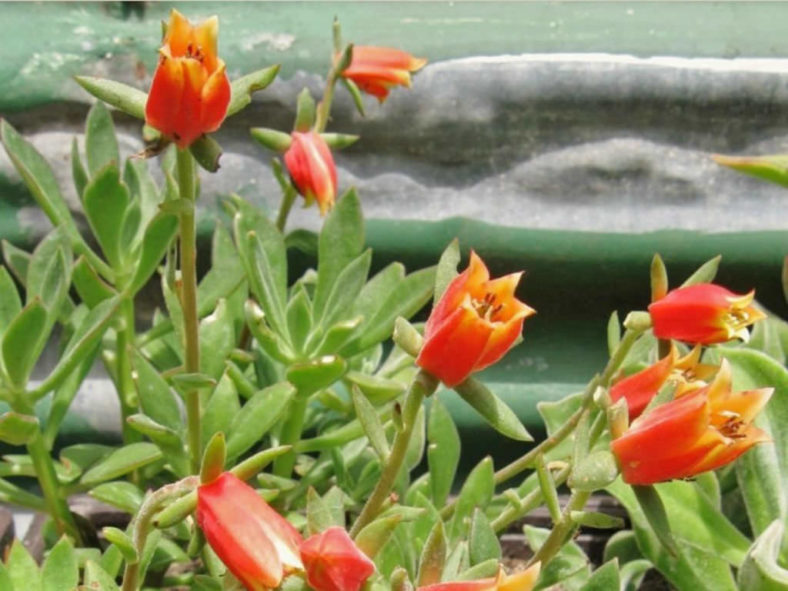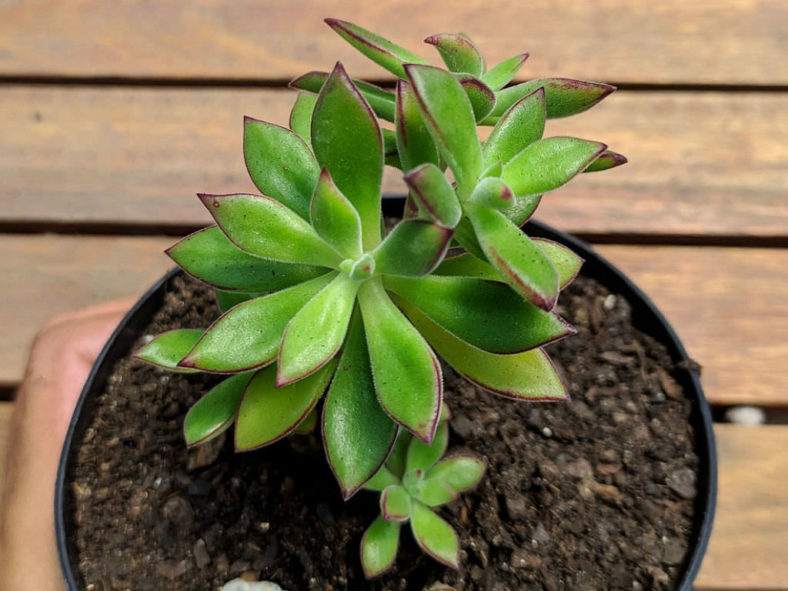Scientific Name
Echeveria harmsii J. F. Macbr.
Common Name(s)
Plush Plant, Red Echeveria
Synonym(s)
Cotyledon elegans, Echeveria elegans, Oliveranthus elegans, Oliverella elegans
Scientific Classification
Family: Crassulaceae
Subfamily: Sempervivoideae
Tribe: Sedeae
Genus: Echeveria
Etymology
The specific epithet "harmsii (HARMS-ee-eye)" honors Hermann August Theodor Harms (1870-1942), a German botanist and taxonomist.
Origin
Echeveria harmsii is native to Mexico (Hidalgo and Oaxaca).
Description
Echeveria harmsii is a small succulent shrub that forms rosettes of light green leaves with red edges at the end of the branches. It can grow up to 12 inches (30 cm) in height and nearly equal width. The leaves are thick, fleshy, narrow, measuring up to 1.2 inches (3 cm) long.
The flowers are bell-shaped, bright red with yellow tips, and can reach up to 1.2 inches (3 cm) in length. They appear in spring on slender stalks with scattered leaves. The flower stalks can grow up to 4 inches (10 cm) long.

How to Grow and Care for Echeveria harmsii
Soil: Echeverias need a potting soil mix that drains quickly. Many growers will create their own mix. However, commercial cactus and succulent potting soil will work fine.
Light: These succulents prefer full sun to partial shade. However, avoid drastic sunlight changes and full afternoon sun, especially in summer. During the winter, when your succulents are inside, put them near the brightest window in your home.
Hardiness: Echeveria harmsii can withstand temperatures as low as 30 to 50 °F (-1.1 to 10 °C), USDA hardiness zones 10a to 11b.
Watering: When and how to water is crucial for Echeveria care. They do not like to be kept too wet, but they also do not like to be kept too dry. Therefore, the "soak and dry" method is the preferred schedule for watering Echeverias.
Fertilizing: Echeverias grow well without fertilizer but may benefit from the extra nutrients.
Repotting: Repot when needed in the spring or early summer.
Propagation: Echeverias are one of the easiest succulents to propagate. They are usually propagated from offsets or leaves but can also be grown from stem cuttings and seeds.
Learn more at How to Grow and Care for Echeveria.
Toxicity of Echeveria harmsii
Echeverias are safe around pets and humans, although it is not advisable to eat them.
Cultivars and Hybrids of Echeveria harmsii
- Echeveria harmsii 'Ruby Slippers'
- Echeveria 'Haageana'
- Echeveria 'Pulv-Oliver'
- Echeveria 'Set-Oliver'
Links
- Back to genus Echeveria
- Succupedia: Browse succulents by Scientific Name, Common Name, Genus, Family, USDA Hardiness Zone, Origin, or cacti by Genus
Photo Gallery
Click on a photo to see a larger version.


